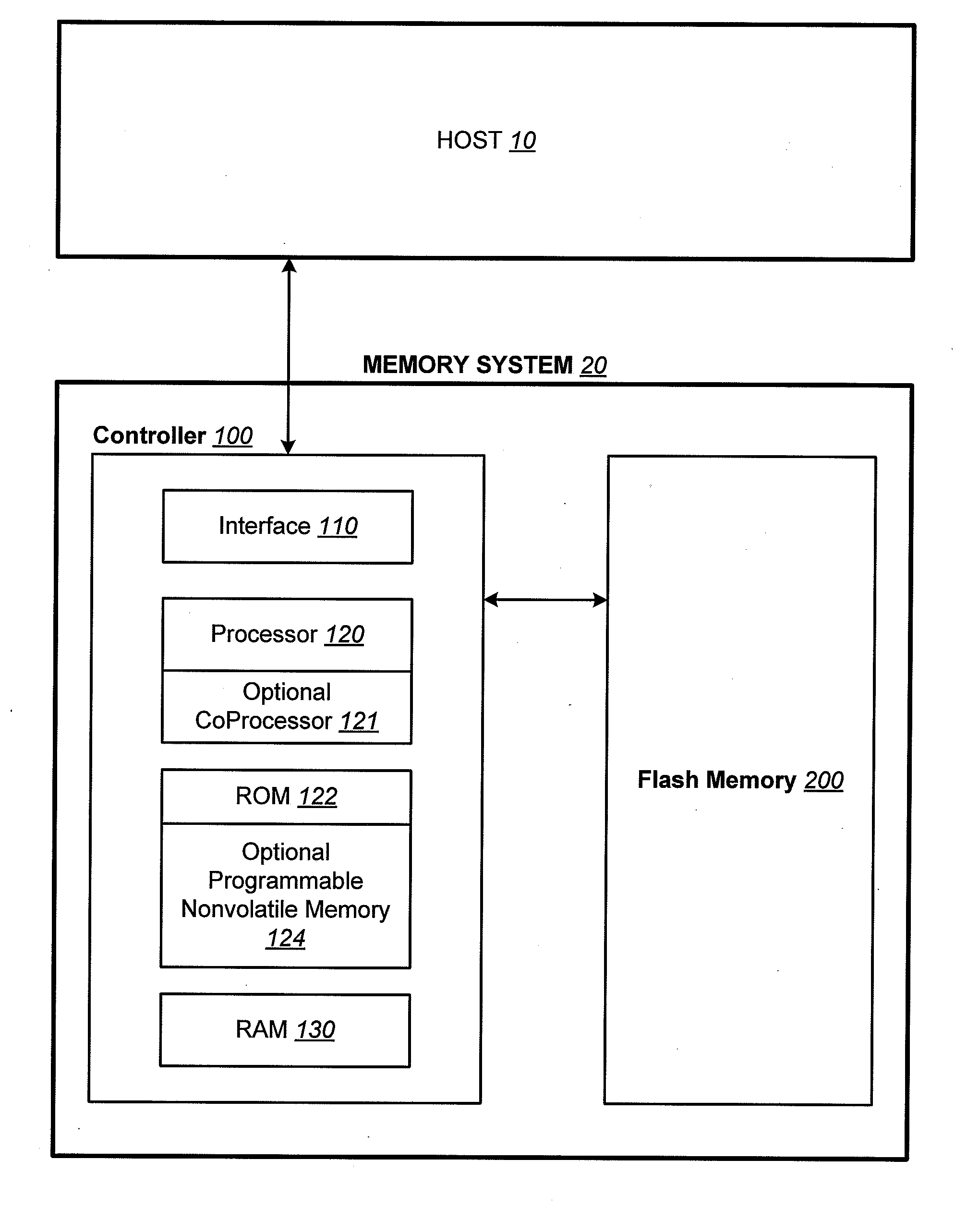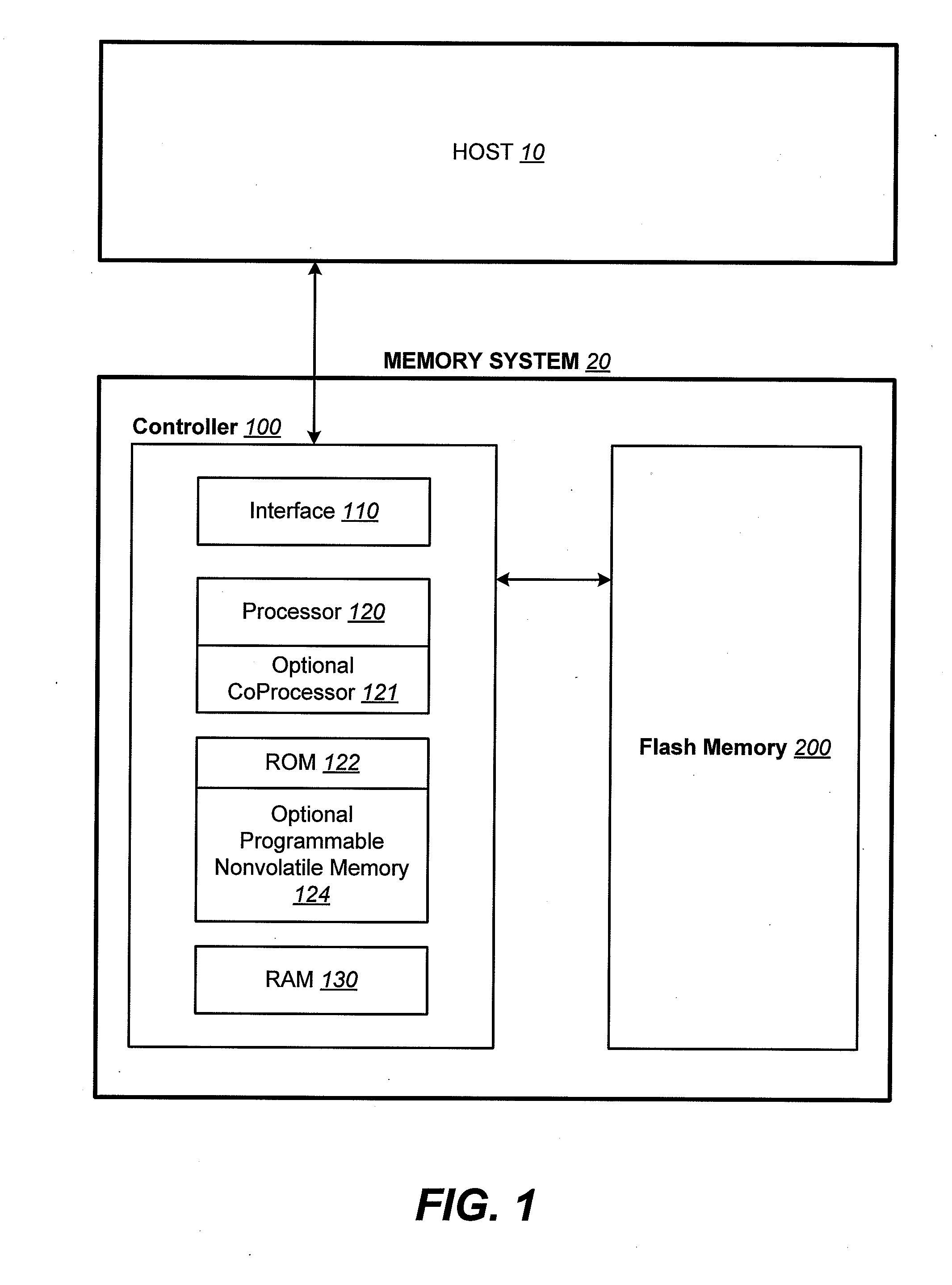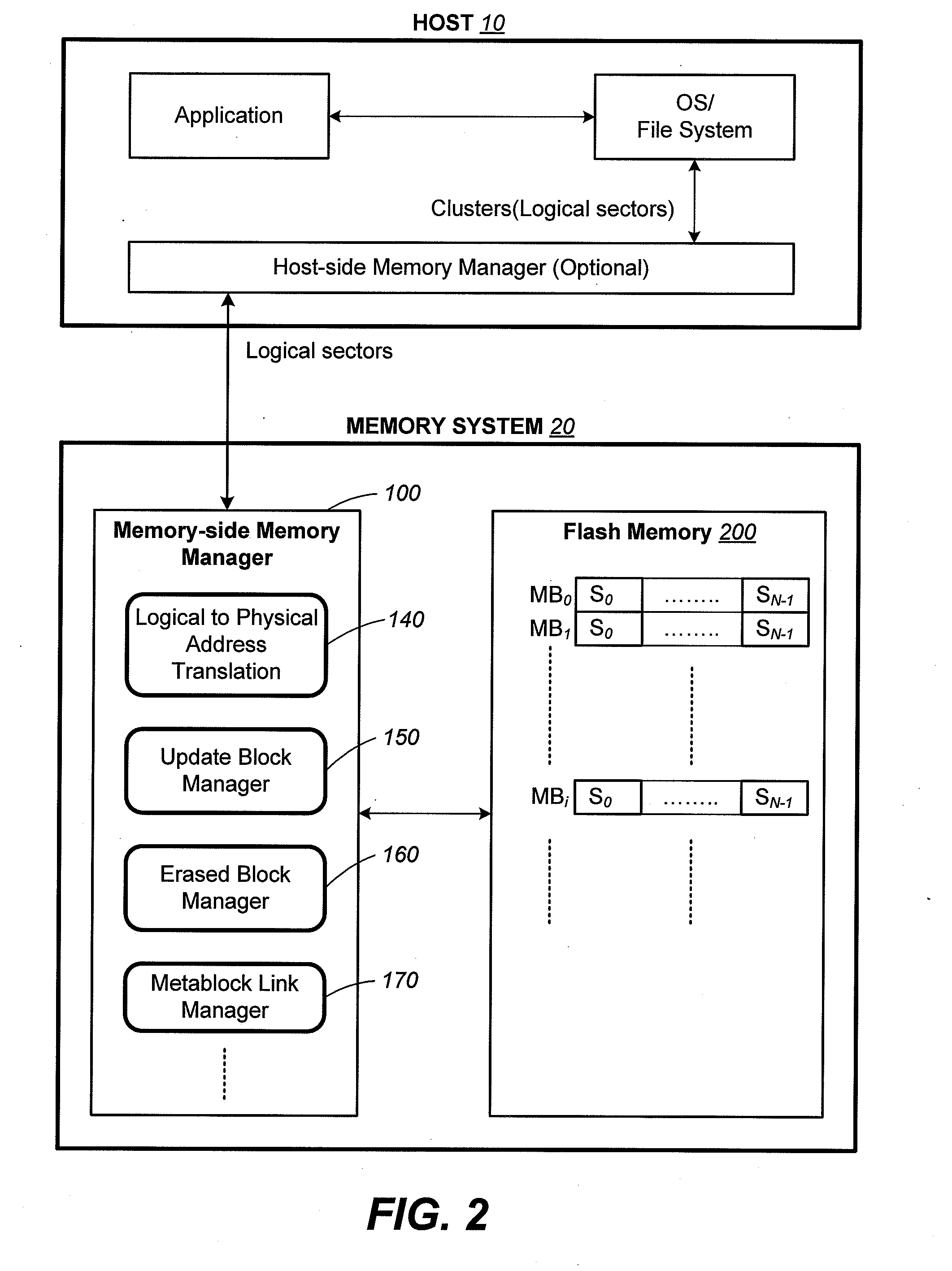Method for Class-Based Update Block Replacement Rules in Non-Volatile Memory
a technology of non-volatile memory and update block, which is applied in the field of non-volatile semiconductor memory, can solve the problems of limited range of logical units and the scattering of memory units that the update is obsolete, and achieve the effect of reducing overhead and increasing efficiency
- Summary
- Abstract
- Description
- Claims
- Application Information
AI Technical Summary
Benefits of technology
Problems solved by technology
Method used
Image
Examples
first embodiment
[0360]FIG. 28 is a flow chart illustrating the present improved scheme of managing a limited set of update blocks during a sequential update, according to a
[0361]STEP 1400: Organizing a nonvolatile memory into blocks, each block for storing data that are erasable together.
[0362]STEP 1402: Allocating up to a first predetermined number of update blocks that are concurrently open for storing updates of logical units of data
[0363]STEP 1406: Responsive to a write command to write sequential data, writing logical units of data in sequential order onto an update block.
[0364]STEP 1408: Responsive to a predetermined condition being satisfied for the update block to be closed to further writing of the sequential logical units of data, allocating a new update block to continue the writing, and if the new allocation would exceed the first predetermined number, preferentially closing a least recently accessed update block in sequential order over any least recently accessed update block in non-s...
second embodiment
[0365]FIG. 29 is a flow chart illustrating the present improved scheme of managing a limited set of update blocks having two predetermined limits, according to a
[0366]STEP 1410: Organizing a nonvolatile memory into blocks, each block for storing data that are erasable together.
[0367]STEP 1412: Allocating up to a first predetermined number of update blocks that are concurrently open for storing updates of logical units of data.
[0368]STEP 1416: Allocating up to a second predetermined number of update blocks among the opened update blocks for storing logical units of data in logically non-sequential order.
[0369]STEP 1418: Whenever introduction of an update block for storing data in logically sequential order may exceed the first predetermined number, closing a least recently accessed update blocks containing data in logically sequential order to make room for the introduced update block.
[0370]STEP 1420: Whenever introduction of an update block for storing data in logically non-sequenti...
PUM
 Login to View More
Login to View More Abstract
Description
Claims
Application Information
 Login to View More
Login to View More - R&D
- Intellectual Property
- Life Sciences
- Materials
- Tech Scout
- Unparalleled Data Quality
- Higher Quality Content
- 60% Fewer Hallucinations
Browse by: Latest US Patents, China's latest patents, Technical Efficacy Thesaurus, Application Domain, Technology Topic, Popular Technical Reports.
© 2025 PatSnap. All rights reserved.Legal|Privacy policy|Modern Slavery Act Transparency Statement|Sitemap|About US| Contact US: help@patsnap.com



